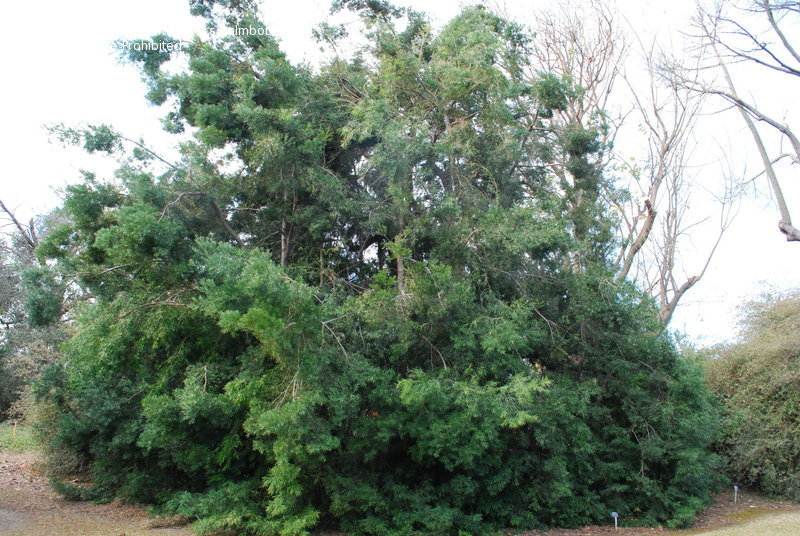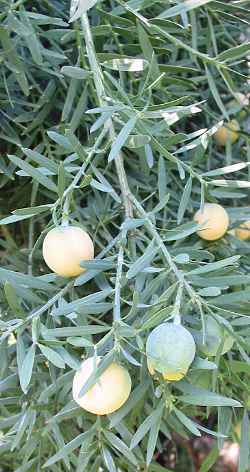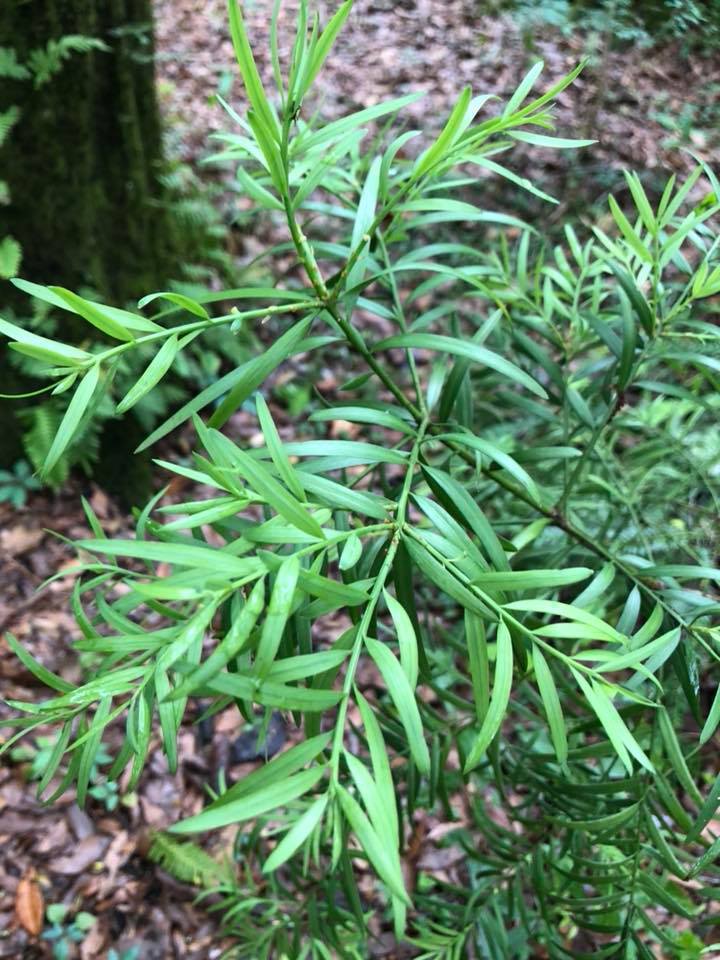Afrocarpus usambarensis, as described by Robert Knud Friedrich Pilger (1876-1953) and completed in 1989 by C.N. Page in New and maintained genera in the conifer families Podocarpaceae and Pinaceae; Notes of the Royal Botanical Garden Edinburgh vol. 45 no. 2. It is commonly known as African yellow-wood or podo. The epithet usambarensis refers to the Usambara Mountains of Tanzania, which contain the type locality.
Description. African yellow-wood in an evergreen coniferous species of tree which will grow to mature heights of 100 feet (30 m) tall with a 6 foot (200 cm) diameter trunk at breast height; and with a domed crown at maturity.
Distribution. This species is native to Tanzania and Kenya occuring in montane evergreen rainforest and dry evergreen forest, mixed with co-dominant angiosperms, growing at elevations ranging from circa 5,000 to 10,000 feet (1,500 - 3,000 m) above sea level. Trees are often solitary but not emergent, only reaching into the general canopy of the forest. It is a dominant tree in rainforests on the upper eastern slopes of Mt. Kilimanjaro at 4,860 to 8,800 feet (1,520 - 2,750 m) elevation. In the Nyungwe Natural Forest Reserve of Rwanda it occurs in evergreen tropical rainforest with precipitation of 68 inches (1,744 mm) per year, a July-August dry season, and temperatures averaging 60ºF (15°C) with negligible seasonal variation.
Identified as "vulnerable" by some watchdog groups, this species is under severe threat from illegal logging in the Chome Forest Reserve in Tanzania (evidence from aerial photography); the same type of saw pit exploitation is known from other locations. It is highly valued for its strength and yellow wood in housing construction. General deforestation and fires are also reducing the rainforest, which is usually limited in extent even naturally. This species is the most valuable and specifically targeted tree for (illegal) logging in this type of forest.


